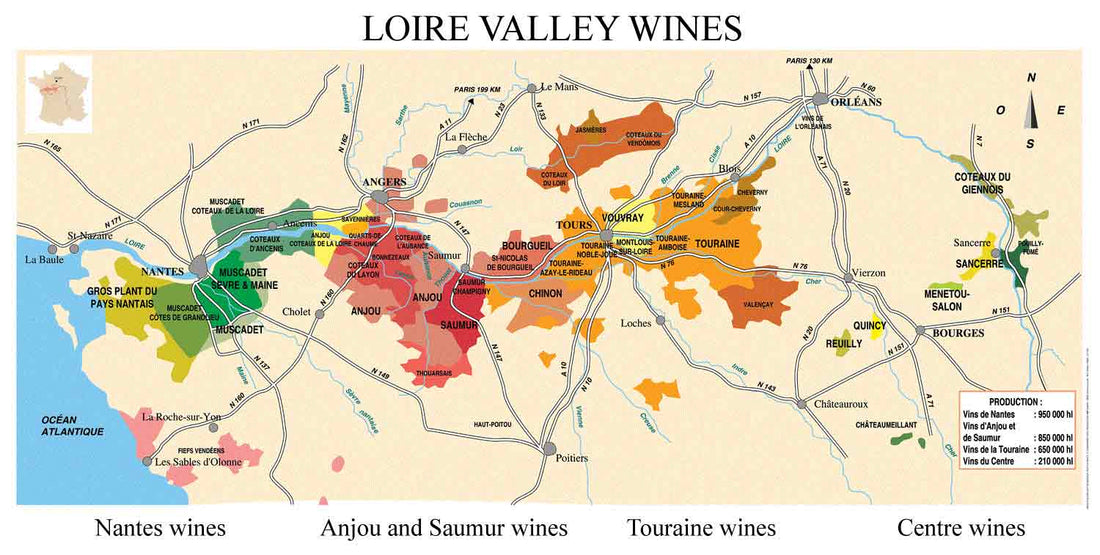Sauvignon Blanc, a vibrant and aromatic white wine grape, has become the most popular white wine varietal in the world. France, the birthplace of this remarkable varietal, offers a diverse array of Sauvignon Blanc wines that showcase the unique terroirs and winemaking techniques of its various regions. In this blog post, we will embark on a journey through the renowned Sauvignon Blanc-producing regions of France, exploring the distinctive characteristics and flavor profiles that each region brings to the table.
The Loire Valley: The Cradle of Sauvignon Blanc
The Loire Valley is often considered the spiritual home of Sauvignon Blanc. This picturesque region, with its diverse climate and soils, produces some of the most celebrated examples of the varietal. The key appellations within the Loire Valley known for Sauvignon Blanc are Sancerre, Pouilly-Fumé, Menetou-Salon, and Touraine.
Sancerre: Located on the left bank of the Loire River, Sancerre is renowned for its elegant and expressive Sauvignon Blancs. The region's limestone-rich soils contribute to wines with high acidity, minerality, and a distinctive flinty character. Sancerre wines often display vibrant citrus notes, green apple, and subtle herbal undertones. Winemakers in Sancerre typically employ stainless steel fermentation to preserve the grape's natural freshness and purity.
Touraine: Located further west, Touraine produces Sauvignon Blancs that are known for their aromatic intensity and vibrant fruit flavors. The soils in Touraine are a mix of clay, limestone, and flint, which contribute to the wines' crisp acidity and minerality. Touraine Sauvignon Blancs are often more affordable than those from Sancerre and Pouilly-Fumé, making them an excellent value. The wines typically showcase notes of green apple, citrus, and tropical fruits, with a refreshing and lively finish. Stainless steel fermentation is commonly used to highlight the purity and freshness of the fruit.
Pouilly-Fumé: Just across the river from Sancerre, Pouilly-Fumé shares a similar climate but is distinguished by its unique soils, which include a higher proportion of flint (silex). This imparts a pronounced smoky, gunflint aroma to the wines, giving Pouilly-Fumé its signature "fumé" (smoky) character. The wines here are known for their complexity, with flavors of grapefruit, gooseberry, and a distinctive mineral edge. Fermentation in a combination of stainless steel and oak barrels is common, adding layers of texture and richness.
Menetou-Salon: Slightly less famous but equally intriguing, Menetou-Salon lies just southwest of Sancerre. The wines from this region often exhibit a softer, more approachable style. The clay-limestone soils here contribute to a rounder mouthfeel, while still maintaining the characteristic acidity and minerality of Loire Valley Sauvignon Blancs. Stainless steel fermentation is the norm, emphasizing fresh fruit flavors like peach, pear, and citrus.
Bordeaux: The Blend Masters
While Bordeaux is predominantly known for its red wines, it also produces exceptional white wines, including those made from Sauvignon Blanc. In Bordeaux, Sauvignon Blanc is often blended with other white varietals such as Sémillon and Muscadelle, resulting in complex and harmonious wines. The key appellations to note are Graves and Pessac-Léognan.
Graves: The gravelly soils of Graves are ideal for growing Sauvignon Blanc. Wines from this region are typically characterized by their rich texture and balanced acidity. The blending of Sauvignon Blanc with Sémillon adds body and depth, while a touch of oak aging introduces subtle vanilla and spice notes. Graves Sauvignon Blancs often feature flavors of lemon, lime, green fig, and a hint of tropical fruit.
Pessac-Léognan: This prestigious sub-region of Graves is renowned for its high-quality white wines. Pessac-Léognan Sauvignon Blancs are known for their elegance and aging potential. The use of oak barrels for fermentation and maturation is common, imparting a creamy texture and complex aromas of citrus, white flowers, and toasty nuances. These wines strike a beautiful balance between freshness and richness, making them highly sought after.
Southwest France: Hidden Gems
Southwest France, although less prominent on the global wine stage, offers some delightful Sauvignon Blancs that are worth exploring. Regions such as Côtes de Gascogne and Bergerac produce fresh and approachable wines with their unique charm.
Côtes de Gascogne: This region is known for its light and refreshing Sauvignon Blancs. The wines here are typically unoaked, emphasizing crisp acidity and vibrant fruit flavors. Expect notes of green apple, lime, and a touch of tropical fruit. Côtes de Gascogne Sauvignon Blancs are perfect for casual sipping and pair wonderfully with light dishes and salads.
Bergerac: Located near Bordeaux, Bergerac produces wines that often mirror the style of its more famous neighbor. Sauvignon Blanc from Bergerac is usually blended with Sémillon, creating wines with a balanced profile of acidity and fruitiness. These wines often exhibit flavors of citrus, peach, and a hint of honey. Some producers in Bergerac also experiment with oak aging, adding complexity and a creamy mouthfeel to the wines.
The Winemaking Techniques: Crafting Distinctive Profiles
The diverse flavor profiles of French Sauvignon Blanc are not only influenced by the regions and their terroirs but also by the winemaking techniques employed by producers. Here are some key techniques that shape the character of Sauvignon Blanc wines:
Stainless Steel Fermentation: This technique is widely used across all regions to preserve the natural acidity and vibrant fruit flavors of Sauvignon Blanc. Touraine Sauvignon Blanc is a prime example of this, as the stainless steel tanks prevent oxidation, resulting in fresh and zesty wines that showcase the varietal's true expression.
Oak Aging: The use of oak barrels, whether for fermentation or aging, adds complexity and texture to Sauvignon Blanc. Oak imparts flavors of vanilla, spice, and toast, along with a creamy mouthfeel. This technique is commonly seen in Bordeaux, where the blending of Sauvignon Blanc with Sémillon further enhances the wine's richness and depth.
Lees Aging: Allowing the wine to age on its lees (dead yeast cells) adds a layer of richness and complexity. This technique is often employed in regions like Pessac-Léognan and Pouilly-Fumé, where winemakers seek to create wines with a fuller body and enhanced mouthfeel. Lees aging can also introduce subtle nutty and yeasty notes to the wine.
Blending: In regions like Bordeaux and Bergerac, blending Sauvignon Blanc with other varietals such as Sémillon and Muscadelle creates wines with greater complexity and balance. The addition of Sémillon adds body and texture, while Muscadelle contributes floral and aromatic qualities.
Skin Contact: Some producers experiment with skin contact during fermentation to extract additional flavors and aromas from the grape skins. This technique can result in more aromatic and structured wines, with enhanced complexity and a slightly tannic texture.
France's Sauvignon Blancs are a testament to the country's diverse terroirs and winemaking expertise. From the flinty and mineral-driven wines of Touraine and Pouilly-Fumé to the aromatic and value-driven wines of Touraine, each region offers a unique expression of this beloved varietal. Whether you prefer the crisp and zesty style of the Loire Valley or the textured and layered wines of Bordeaux, French Sauvignon Blanc has something to offer every palate. Angel Falls Wine offers a Touraine Sauvignon Blanc that we think is the quintessential expression of this diverse varietal. We hope you'll give it a try!

